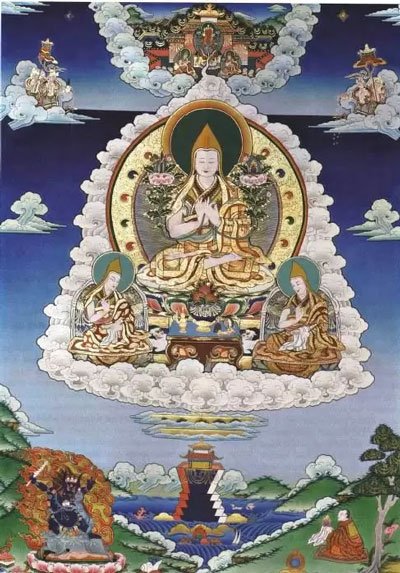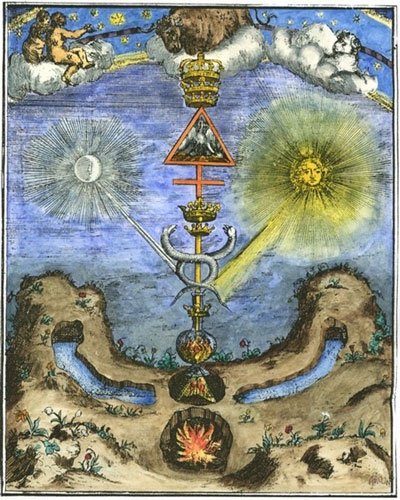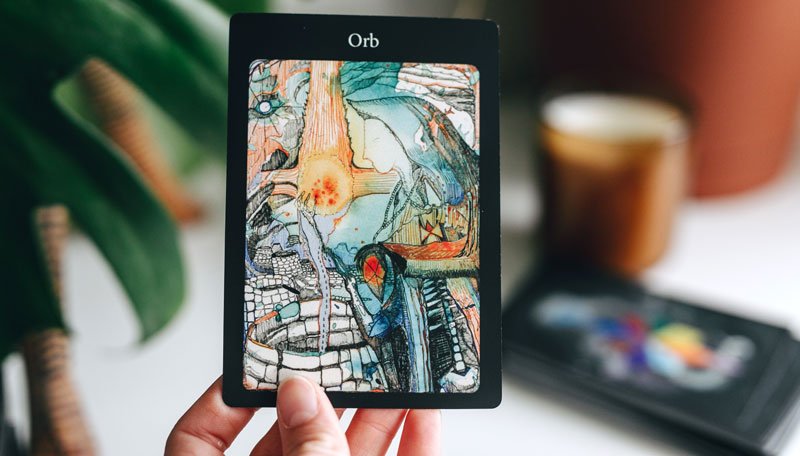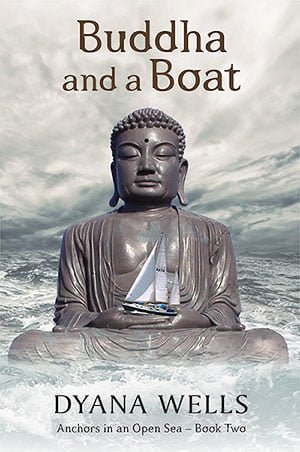Connection, identity and becoming alive.
I am beginning this discussion from the understanding that all experience is mental. This is mainstream science. Experience is a result of interaction between the world-in-itself which is beyond my reach, my senses, my brain and consciousness. Neuroscience acknowledges that all contents of experience are symbolic and conceptual in nature. They only represent the world-as-it-is, which we can’t know anything about. Feelings can be understood as symbolic representations of chemistry, although we should remember that even the theories of chemistry are mental constructs. My experience, created by my mind, presents both a world outside of me and a more personal world within. Within these mental worlds I live and have my being.
‘For in him we live and move and have our being.’ Acts 17:28
The second understanding I am taking for granted is that experience and the inferences we make from it, which are still an experience, are all we have. We never get to look around the outside to what lies beyond our minds. We have no idea what is really out there. All experience is constructed, even our most subtle experiences – say of pure awareness – arise in our minds. Furthermore, conscious experience, ie. experience that can be recalled, requires a sense of self, identity. There is always a subject in conscious experience.
I live in two worlds, an external world that is projected in response to information from the five senses, and an internal world made up of feelings, emotions, thoughts and images, which are representations of some deeper inner dynamic.
We will return to an enquiry about the relationship between these two worlds later in this discussion.
 Our sense of selfhood influences our wellbeing. What we consider ‘self’ determines how we engage in life. Our sense of self has undergone some radical changes over human history, because our metaphysical understanding of life had changed.
Our sense of selfhood influences our wellbeing. What we consider ‘self’ determines how we engage in life. Our sense of self has undergone some radical changes over human history, because our metaphysical understanding of life had changed.
When we connect with something closely, it becomes part of our sense of self. The sense of who we are, is made up of those experiences we most closely identify or connect with. For example, if I identify most strongly with a physical body, then that is who I am, a physical body. Identity and connection are highly correlated. If I feel very closely connected to Jesus, then those experiences associated with Jesus form a significant part of my self-identity.
Because modern man has objectified the external world and considers it quite separate from himself, identity has become more focused on inner, personal stories. It seems that medieval people, in fact all people living before the enlightenment of the 17th and 18th centuries, had a quite different sense of self to modern man.
Before the age of enlightenment, and the birth of modern science, the world around us was as alive as we are. The mechanistic universe of Newtonian physics had yet to kill it off. Descartes had yet to reduce the whole universe including the human body to mechanical insentience. When he decided that the universe, including the human body, was a large clock, created and set in motion by the clockmaker, God, the western world followed him. The laws of physics, God’s laws, described its behaviour and that is all there is to it. The only living part of the universe was the soul of man and God. Wow!
Then came Darwin and Mendel, an early geneticist. Life was understood as the blind process of evolution, random selection pitted against the law of survival of the fittest. God and the soul disappeared completely. Modern man arrived in a universe devoid of any meaning beyond chance, struggle and mechanics. The modern generation has adopted science as its God. Science by definition isn’t interested in meaning, it is only interested in the principles or laws that describe and predict observable behaviour. When science becomes God, life by definition becomes meaningless.
Now let us return to our previous discussion, about the sense of self and the idea that connection is strongly related to identity.
Before the scientific revolution of the enlightenment, the outer world was alive and as sentient as human beings, and humans had a very close relationship to all things natural. They needed to, in order to survive. The mountains and rivers and oceans were beings, the air was filled with spirits and angels. Because it is impossible to scientifically prove the existence of these living powers, entities and beings, science pretty much says they don’t exist, and we pretty much go along with that.
 The view of primitive tribes, and eastern peoples even now is different. The sun, the planets, the plants and the ocean still are the dwelling places and the manifest form of individual consciousnesses. From the arrogant viewpoint of modern man, we suggest that the powers and beings they engage with are simply projections of their own inner psychology, rather than primary experience. Nature isn’t like this. Primitive man doesn’t understand himself so he projects his internal world into the outside world.
The view of primitive tribes, and eastern peoples even now is different. The sun, the planets, the plants and the ocean still are the dwelling places and the manifest form of individual consciousnesses. From the arrogant viewpoint of modern man, we suggest that the powers and beings they engage with are simply projections of their own inner psychology, rather than primary experience. Nature isn’t like this. Primitive man doesn’t understand himself so he projects his internal world into the outside world.
This is very interesting because I want to make a case for the proposition that modern man does exactly the opposite, we internalise outer forces and powers because we are no longer permitted to connect with them in the natural world outside us. With the advent of depth psychology we have magnified and deified our personal internal lives and given them the crown of meaning and reality. Or we have denied both … in which case we have very little left so we keep ourselves busy and distracted so as not to fall into existential depression.
Science killed off religion. It killed off the beingness of stunning seascapes and mountain ranges. We might say we love the sea, but not for a moment do we consider we could have a heart-to-heart living connection with it, one that is not just a one way fanciful projection, an imaginative excess.
As a serious student of Buddhism for over thirty years I would like to look at what these teachings have to contribute to our discussion.
In Tibetan Buddhism the goal of meditation is to rest in our true nature, which is pure, unconditioned awareness. A state of clear, radiant, knowing or presence. A recognition that all phenomena are simply arisings and passing aways in this radiant mind. The mundane world is impermanent and ultimately uninteresting. Compassion is the only response to the difficulties of life.
The way Tibetan Buddhism is taught for the western mind, deity practice is seen as psychological. The deities represent energies in our being which we need to understand, purify and use for the benefit of all suffering beings. We connect with these energies through meditation, visualisation and introspection.
For the Tibetans from whom we received these teachings, the deities had a real existence independent of the human psyche. The teachings were full of subtle body elementals and ethereal guardians of the teachings; the world was bubbling over with conscious entities at all levels of evolution, similar to pagan-infused medieval Christianity.
We modern practitioners have tended to regard these beliefs as archaic. We no longer anthropomorphise trees and oceans and elemental qualities. The practices inside the spiritual teachings work, however, so we do them. We slide over this incongruence, the fairy tale. Or maybe we half believe it, but that means virtually nothing so it has no power.
We are taught that the Buddha was not concerned with metaphysics, he was only concerned with results, freedom from suffering. Pure Buddhism, untainted by the rich history of the Bon religion of Tibet, is totally devoid of soul entities. Interconnectedness is fundamental, but intrinsic selfhood isn’t. The world is the ever-changing play of energies. This teaching is as empty of meaning as science. It leaves us with no purpose but freedom, the discovery that we don’t have any real existence, so we are definitely not worth clinging to. Nothing is worth clinging to, it is all impermanent. Is this a freedom to embrace? In some ways it is very similar to our modern scientific view. Maybe that’s why it has such an appeal. From the earth we come and to the earth we return, nothing left over. The eternal transmutation of matter and energy is all there is.
 There is always a metaphysics underpinning any theory, teaching or position. It may not be explicit but it is there and that of Hinayana Buddhism and science seems very similar. There is no meaning to be found in the soulless world, so abandon it, or maybe for us it is so go and buy something so as not to fall into the abyss of meaninglessness.
There is always a metaphysics underpinning any theory, teaching or position. It may not be explicit but it is there and that of Hinayana Buddhism and science seems very similar. There is no meaning to be found in the soulless world, so abandon it, or maybe for us it is so go and buy something so as not to fall into the abyss of meaninglessness.
The non-dual outlook of Vedanta and later Buddhist teachings reduces all experience to pure awareness. Experience is but the wave on the ocean of awareness. Quantum physics reduces the stuff of life to collapsing probability fields of wave-like particles. Both visions are similarly reductive.
Some recent investigations have suggested a new way of looking at the relationship between inner and outer experience, and the problem of identity and meaning.
I recently came across the alchemical claim that the inner and outer are the same. As above, so below. I was fascinated even though I couldn’t quite get it. There was a discovery to be made; a revolution in my thinking was imminent, I was sure of it. My mantra became, ‘As above so below.’ I was unclear what the terms above and below actually referred to. That the inner and outer worlds could be identical sent shivers down my spine. Some radical insight was about to emerge, I was sure of it.
I knew that consciousness, the matrix of experience, presents an inner and outer reality. The consciousness of both is the same. The different spaces they occupy is only apparent. In meditation they reduce to the same space, the one space of awareness. Sometimes the outer world is in focus, sometimes my inner world.
We think of the outer world as a representation of something that is actually out there, even though we now understand that space itself is projected by the mind – it has no objective reality. None the less, our experience of the outer world in some way represents a world we share with others.
My inner world is private, it is full of feelings, will, desire, emotions, dreams, fears, stories, etc. These inner experiences are also representations of something else, of which we have no idea, but which gives rise to them.
Jung postulated the existence of a personal and collective unconscious symbolic mind. This is the repository of past experiences both personal and collective as well as archetypal patternings common to the whole of mankind. Jung was mostly concerned with the material of inner experience. But might these just be the patternings that the brain uses to create images of our outer world as well. The world symbols must come from somewhere. It is easy to accept that the unconscious mind delivers up our personal inner experience. The possibility of extending this function to the outer world is the more radical move. How would we suddenly imagine a whole new theory to explain the outer world if it didn’t arise from something inside that did know this reality in some way?
Of course depending on the social conditioning of the time only certain patternings will be permitted to arise to describe our worlds. For example in earlier times patternings relating to power, or sadness might most readily be experienced in the outside world, in the modern world these patternings might be restricted to inner experience. The basic patterning is the same however.
When we revisit the Vedantic view that all phenomena is built from awareness and consider the common experience in meditation that this awareness is intelligent and alive, we have what we need. Awareness and consciousness and mind are fundamentally the same. All experience is mental, alive and intelligent. It consists in the arising of symbols in mind, some of which are projected out, and some which remain within. All experience arises from the same living source. Maybe the substrate of the unconscious mind is the world-in-itself. Once we go behind our mind created realities, there is no time and space because these are also mental constructs, there is no inner or outer, they collapse into each other.
Our thoughts and feelings, the sighing of the trees and the raging river may be expressions of the same impulse. The inner and outer, two sides of the same coin.
What lies behind and gives rise to the world of outer experience, may also give rise to the world of inner experience.
So how do these ideas of inner and outer expression relate to the modern problem of connection and identity?
 Humans seem to be on some kind of mental evolutionary journey. We started out living in a world richly populated with all the attributes we have now internalised, feelings, emotions, powers, will, desire and aliveness. We were intimately connected to this animate world around us. We identified with it. In some sense the possibility of separating out from it arose when Adam and Eve ate from the tree of knowledge, and came to know their experience as separate. Even so, for most of our history identity loosely included God or gods, the natural world and our communities. We lived in close relationship to the pattering rain, the setting sun, the rituals of our group. It was impossible to feel alone, because we just were one with everything in our lives. Some elements of our identity were conscious and others were unconscious. If our job as humans is to wake up to our lives, then there was still some way to go.
Humans seem to be on some kind of mental evolutionary journey. We started out living in a world richly populated with all the attributes we have now internalised, feelings, emotions, powers, will, desire and aliveness. We were intimately connected to this animate world around us. We identified with it. In some sense the possibility of separating out from it arose when Adam and Eve ate from the tree of knowledge, and came to know their experience as separate. Even so, for most of our history identity loosely included God or gods, the natural world and our communities. We lived in close relationship to the pattering rain, the setting sun, the rituals of our group. It was impossible to feel alone, because we just were one with everything in our lives. Some elements of our identity were conscious and others were unconscious. If our job as humans is to wake up to our lives, then there was still some way to go.
To become conscious is to make known what is still unknown. We do this by separating out from whatever it is, we disentangle ourselves. We slowly come to recognise the otherness of the thing.
During the Age of Enlightenment the outside world was wrenched from us. It was objectified, studied and killed. The human body was wrenched from the soul, reduced to the study of anatomy and physiology. For a time psychology was reduced to behaviourism, and consciousness itself was denied reality.
The insights of Freud and Jung arose in this climate. Rescue was at hand. The inner psyche of humanity came to display all the richness of feuds, warring, adventures and spirituality previously presented by the now vanquished gods and nature spirits. Humans came to identify with their vast, never-ending inner dramas. The outer world faded even further away. We formed connections with ourselves, owning all the deep layers of inner experience continuously uncovered. We learned to introject, or take back into ourselves all our projections and transferences. We became like islands sufficient unto ourselves. The Buddha had a similar idea. ‘Monks, be islands unto yourselves.’
But this total reversal of connection led to a profound narcissism. Our inner worlds became all that mattered. Nothing else pretty much existed. The outer world became a vacant lot that would hopefully meet our needs.
Fortunately there is a next step in this journey, a step that will take us beyond this necessary but limited process of individuation, this excruciating self-focused, self-consciousness. Through Buddhist practices of mindfulness, we learn to develop our consciousness further, to disconnect ourselves from all the endless inner dramas called forth from the darkness of the underworld when we gave them names. Through mindfulness practices, we discover that not only are we not the outer world, we are not our inner world either. We arrive home when we realise pure impersonal awareness to be our true nature or identity. This is the goal of Vedantic and later Buddhist teachings. All the stuff of our emotions is as lacking in selfhood as the stuff of the outer world. They are both the same, intrinsically empty of meaning. Oops. This can’t possibly be the final result. This seems to have negated our human need to feel connected to the world.
This resting place would be a very lonely place for a human being. Even though one might at times be filled with the radiance of the divine, what when it goes away? What is one left with then? Where are the connections that give meaning to my life? What am I to identify with in my ordinary life to orientate me? And what about the living wonder of creation?
How do we re-enter the world and in what way is it different from before?
Body, speech and mind.
 One mind, one body, one speech. Here I think the alchemical maxim is key. As above so below. The inner and the outer are the same.
One mind, one body, one speech. Here I think the alchemical maxim is key. As above so below. The inner and the outer are the same.
The energies that stir my being are the same energies that enliven the world outside of me. I am not anthropomorphising anymore, it’s just the way life is.
The mind of my personal experience, that brings me to life, is the same mind that brings the planets and stars to life. My body and the laws it obeys are no different from all those of all other bodies in the world. It is a uni-verse after-all. There is no separation. I am intimately connected with life at all levels of being. Everything is a reflection of me and I am reflected everywhere. This is true inter-connectedness. The powers and forces and will and ideas that give rise to nature also give rise to me. I am a part of nature, I have been built from nature, and I exhibit and experience all the powers manifesting in her.
However because I now recognise my most fundamental identity as pure awareness I am not swept away in strong currents of lust nor overwhelmed by beauty. I can be spontaneous and present to the fullness of life in all its moods, neither separate nor the same. The grasping has gone, the fear, greed, delusion and isolation have gone.
This is the gift of the journey. I have returned home to my true nature as awareness and I have been returned to the fullness of the whole of life. I separate out so I might join the dance and I let go so that I may remember myself as the whole. I am part of the whole, identified with the whole, and the pristine radiance through which the whole manifests. This is the gift of the human journey. We can have our cake and eat it too.
Dyana Wells
021 036 7717
dyanawells.com




